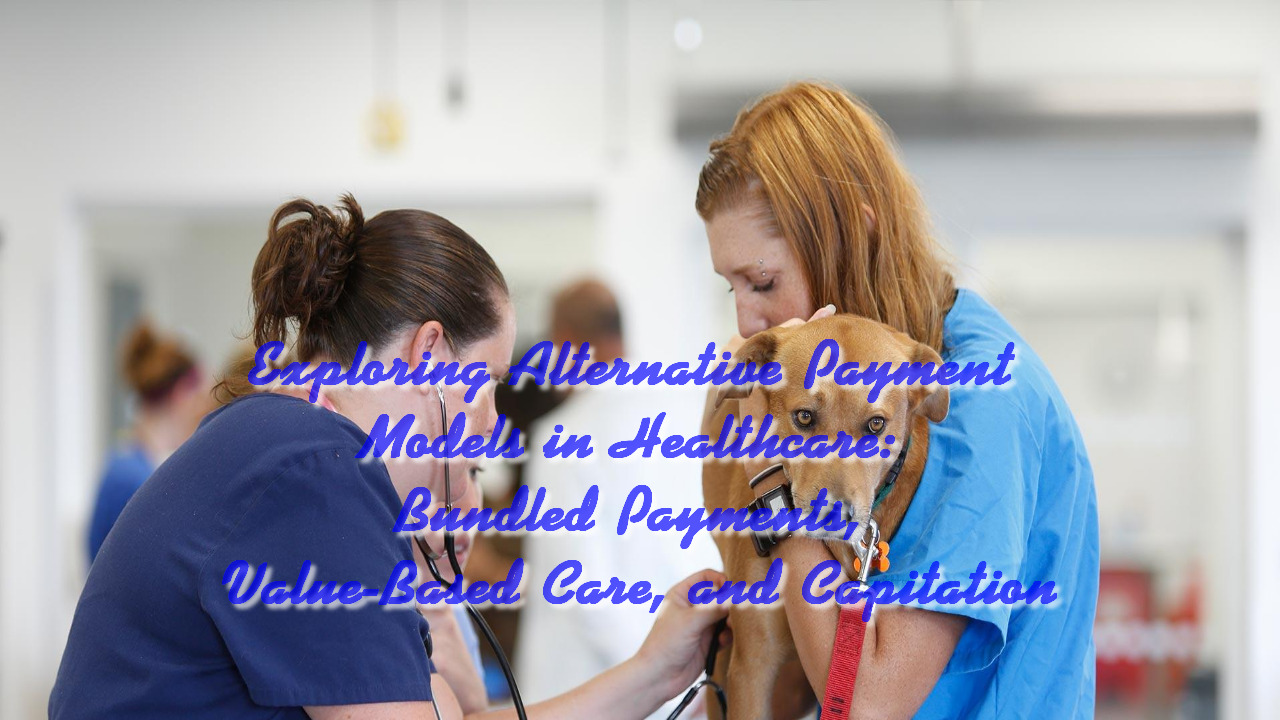The healthcare industry has been undergoing significant changes in recent years, with a shift towards alternative payment models (APMs). Traditionally, healthcare providers have been reimbursed based on the volume of services they provide rather than the quality of care they deliver. This has led to a focus on delivering more services rather than improving patient outcomes. APMs aim to change this by incentivizing providers to deliver high-quality care that is efficient and effective. In this article, we will explore three popular APMs: bundled payments, value-based care, and capitation.
Value-Based Care

Value-based care is a payment model in which healthcare providers are reimbursed based on the quality of care they deliver rather than the quantity of services they provide. This payment model focuses on achieving positive outcomes for patients rather than simply providing more services. More information on medical billing services and other types of payments is here.
Under a value-based care model, providers are incentivized to improve patient outcomes and reduce costs. For example, if a provider can prevent a patient from being readmitted to the hospital, they may receive a financial reward. If a provider fails to deliver high-quality care, they may be penalized.
One example of a value-based care model is the Medicare Shared Savings Program (MSSP). Under this program, healthcare providers are incentivized to work together to deliver high-quality care to Medicare beneficiaries. If providers can reduce costs while maintaining or improving patient outcomes, they may receive a financial reward.
Bundled Payments

Bundled payments, also known as episode-based payments, are a payment model in which healthcare providers are reimbursed a fixed amount for all services related to a specific medical condition or procedure. This payment includes all services provided during a specific time period, including hospitalizations, physician visits, and diagnostic tests.
Bundled payments are designed to incentivize providers to work together to deliver high-quality care. When providers are reimbursed based on the outcome of care rather than the volume of services provided, they are more likely to coordinate their efforts to ensure that the patient receives the best possible care.
One example of a bundled payment model is the Comprehensive Care for Joint Replacement (CJR) program. Under this program, hospitals receive a fixed payment for all services related to a patient’s hip or knee replacement surgery. If the hospital provides high-quality care and the patient experiences a good outcome, the hospital is allowed to keep a portion of the savings. If the hospital provides poor-quality care, it may be penalized.
Capitation
Capitation is a payment model in which healthcare providers are paid a fixed amount per patient per month. This payment includes all services provided to the patient, regardless of the number of visits or procedures required. Capitation is designed to incentivize providers to focus on preventive care and to keep patients healthy rather than simply treating them when they become sick.
Under a capitation model, providers are incentivized to keep patients healthy and to prevent the need for expensive medical interventions. If providers can keep their patients healthy, they can reduce costs and improve patient outcomes.
Conclusion
Alternative payment models are changing how healthcare providers are reimbursed for their services. Bundled payments, value-based care, and capitation are just three examples of these models. By focusing on the quality of care delivered to patients rather than the quantity of services provided, providers can improve patient outcomes and reduce costs. These alternative payment models have the potential to transform the healthcare industry and improve the overall health of patients. However, there are challenges to implementing these models, including the need for accurate data collection and analysis, the need for collaboration between healthcare providers, and the need for patient education and engagement.
Despite these challenges, alternative payment models offer a promising path forward for the healthcare industry. By incentivizing high-quality, coordinated care, these models have the potential to improve patient outcomes while reducing costs. As the healthcare industry continues to evolve, it will be important to explore and implement new payment models that prioritize patient-centered care and value-based outcomes.

